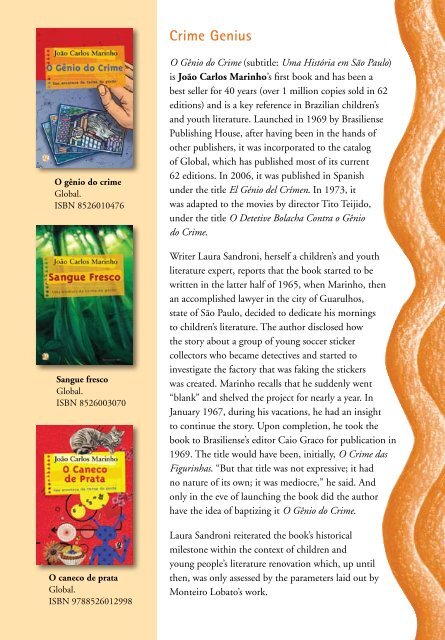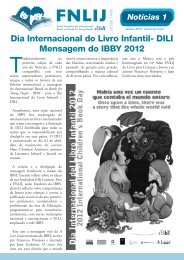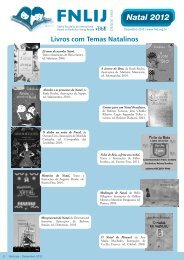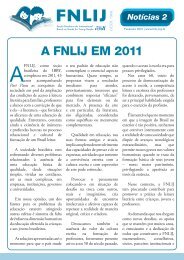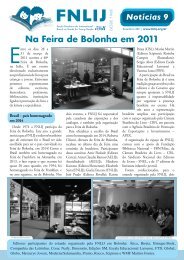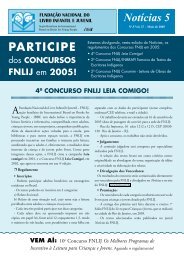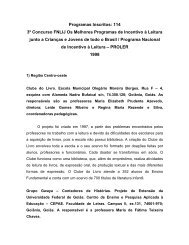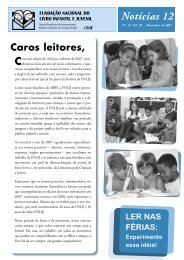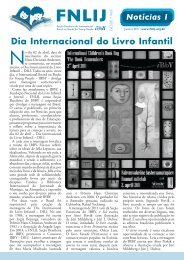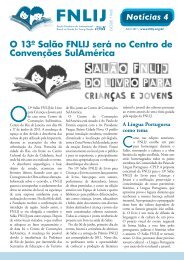Selection - FNLIJ
Selection - FNLIJ
Selection - FNLIJ
You also want an ePaper? Increase the reach of your titles
YUMPU automatically turns print PDFs into web optimized ePapers that Google loves.
O gênio do crime<br />
Global.<br />
ISBN 8526010476<br />
Sangue fresco<br />
Global.<br />
ISBN 8526003070<br />
O caneco de prata<br />
Global.<br />
ISBN 9788526012998<br />
Crime Genius<br />
O Gênio do Crime (subtitle: Uma História em São Paulo)<br />
is João Carlos Marinho’s first book and has been a<br />
best seller for 40 years (over 1 million copies sold in 62<br />
editions) and is a key reference in Brazilian children’s<br />
and youth literature. Launched in 1969 by Brasiliense<br />
Publishing House, after having been in the hands of<br />
other publishers, it was incorporated to the catalog<br />
of Global, which has published most of its current<br />
62 editions. In 2006, it was published in Spanish<br />
under the title El Génio del Crímen. In 1973, it<br />
was adapted to the movies by director Tito Teijido,<br />
under the title O Detetive Bolacha Contra o Gênio<br />
do Crime.<br />
Writer Laura Sandroni, herself a children’s and youth<br />
literature expert, reports that the book started to be<br />
written in the latter half of 1965, when Marinho, then<br />
an accomplished lawyer in the city of Guarulhos,<br />
state of São Paulo, decided to dedicate his mornings<br />
to children’s literature. The author disclosed how<br />
the story about a group of young soccer sticker<br />
collectors who became detectives and started to<br />
investigate the factory that was faking the stickers<br />
was created. Marinho recalls that he suddenly went<br />
“blank” and shelved the project for nearly a year. In<br />
January 1967, during his vacations, he had an insight<br />
to continue the story. Upon completion, he took the<br />
book to Brasiliense’s editor Caio Graco for publication in<br />
1969. The title would have been, initially, O Crime das<br />
Figurinhas. “But that title was not expressive; it had<br />
no nature of its own; it was mediocre,” he said. And<br />
only in the eve of launching the book did the author<br />
have the idea of baptizing it O Gênio do Crime.<br />
Laura Sandroni reiterated the book’s historical<br />
milestone within the context of children and<br />
young people’s literature renovation which, up until<br />
then, was only assessed by the parameters laid out by<br />
Monteiro Lobato’s work.


